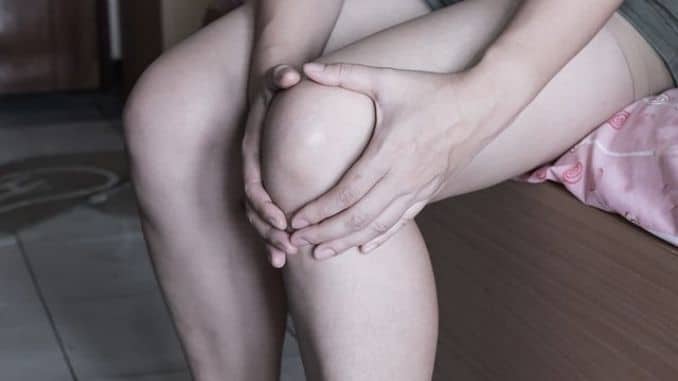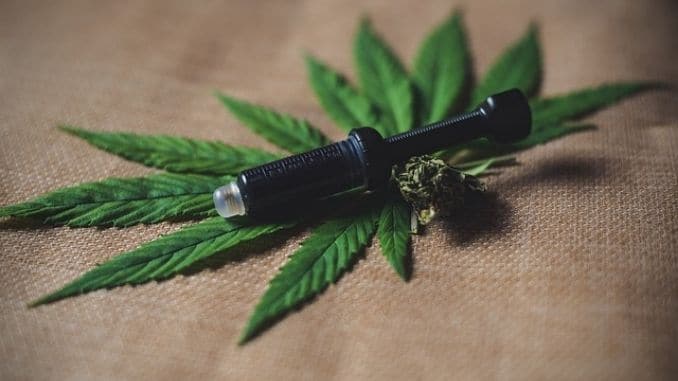
It wasn’t that long ago that if you wanted to try acupuncture, homeopathy or Reiki to help manage an illness or chronic pain condition, your doctor would have looked at you, raised an eyebrow and said, “Sure, but they probably won’t help you much.”
Today, those attitudes have changed. Considering the opioid epidemic, which kills an average of 130 Americans every day, doctors are much more open not only to alternative ways to ease the pain but to new types of complementary care that can help patients to improve quality of life.
Researchers reported that between 2004 and 2012, physician attitudes toward complementary and alternative medicine (CAM) became much more positive, with physicians showing an increased willingness to use CAM to address patient care needs.
Patients are even more accepting of these care options. In a recent 2019 study, physicians at the University of Texas Southwestern Medical Center found that a full one-third of people with a cancer diagnosis used options like meditation, yoga, acupuncture, herbal medicine and supplements.
Most of us are familiar with complementary care, particularly with massage, Reiki, acupuncture and the like. However, today, there are new healing methods available that you may not be aware of. We introduce you to five of them here and share the pros and cons of each.

1. Cryotherapy
Alternative Health Options to Ease Pain and Anxiety: When something hurts, ice often helps. The cold temperatures can reduce inflammation, take down swelling and help soothe the pain. Cryotherapy is built upon that same premise, except for instead of using an ice pack or a bag of frozen peas, you either use a cold probe, a tank filled with cold water or a booth filled with cold air.
This therapy is currently becoming more popular, with new treatment centers opening across the country every week. Although it’s been used in fitness centers and spa settings in Europe for years, it’s just now catching on in the United States.
The word “cryotherapy” comes from the Greek “cryo” (cold) and “therapeia” (cure). The idea is to expose yourself to subzero temperatures — usually below around 130 degrees Celsius and minus 266 degrees Fahrenheit — for two to four minutes. Doctors may administer a cold probe into a specific area of tissue to numb bothersome nerves, or you can step into a chamber filled with super cold air to experience the benefits.
Whole-body cryotherapy (WBC) — the “step into the booth” kind — is used today mostly as a treatment for sports injuries, although some now say that it can also help with chronic pain conditions like rheumatoid arthritis, chronic back pain, and migraines while encouraging overall health.
The therapy originated in Japan in the late 1970s and was used in patients with rheumatoid arthritis. The cold seemed to reduce soreness and pain. Scientists believe that the rapid decrease in temperature stimulates the release of the body’s natural endorphins, which provides natural pain relief.
Later, doctors used the therapy to freeze and inactivate certain problematic nerves, treating not only arthritis but other types of nerve compression or entrapment.

Benefits
Early studies show that cryotherapy may have the following benefits:
- Relieve muscle and joint pain
- Ease the pain of rheumatoid arthritis
- Reduce the pain and frequency of migraine headaches
- Speed muscle healing
- Reduce inflammation
- Potential treatment for skin cancer–doctors may “freeze” the cancer cells off
- Treatment for cervical cancer
- Reduce symptoms of anxiety and depression
- Help in the treatment of frozen shoulder
Drawbacks
Although some say that cryotherapy helps with weight loss, there is little evidence to support that claim. The U.S. Food and Drug Administration (FDA) has issued a warning to consumers that it has not approved any whole-body cryotherapy devices for any specific medical conditions. Consumers should always check any facility very carefully before using it, to be sure the staff is properly trained in administering cryotherapy treatments.
Possible side effects include:
- Tingling and numbness
- Redness and irritation of the skin
- Frostbite
- Eye injuries
If you have any of these conditions, you should avoid whole-body cryotherapy, in particular, as it could cause serious complications:
- Nerve damage (neuropathy)
- High blood pressure
- Heart or lung disease
- Poor circulation
2. Oxygen Bars
Alternative Health Options to Ease Pain and Anxiety: Like cryotherapy treatments, oxygen bars have become more popular during the past few years, showing up in shopping malls, casinos, and nightclubs. Although they existed in the U.S. in the 1990s, they have experienced a surge lately as young people look for ways to boost their brainpower.
These bars are similar to regular bars, except when you sit or stand at the table, you choose an oxygen hose instead of a cocktail. These hoses are just like the ones you’ve seen in the hospital — you wrap them over your ears and place the open-air tubes into your nostrils. Then, you choose your scent, if desired, and sit down and breathe in oxygen-enriched air for up to 20 minutes or so.
The oxygen itself doesn’t come from a tank. That’s considered “medical” oxygen and, if anyone uses tanks, it’s against FDA regulations. Instead, the oxygen usually comes from an “oxygen concentrator,” which takes the ambient air around you at the moment, separates the oxygen from the nitrogen and delivers the concentrated oxygen out through the tube. Some tubes are attached to diffusers that deliver moisture and an aromatherapy scent.
This therapy originated in Japan and South America, where people were more concerned about pollution and wanted to breathe purified air. Then, they started popping up in Europe and North America in the late 1990s.
The idea is that while breathing in this highly oxygenated air, you’ll experience several health benefits.
Benefits
Although the American Lung Association states that inhaling oxygen at oxygen bars is unlikely to have any physiological benefits, they also note that there’s no evidence that they are dangerous to health.
Proponents say that this type of oxygen therapy provides the following benefits, but there is little to no evidence supporting these claims:
- Boost energy levels
- Relieve stress
- Cure hangovers
- Improve mood and concentration
- Relieve headaches
- Promote better sleep
Drawbacks
On the whole, there seem to be a few drawbacks to this therapy. Those with diagnosed illnesses, however, such as the following, should always use only medically prescribed oxygen, not the oxygen at these bars, or they could experience dangerous complications. Too much oxygen, for example, can cause breathing problems in these individuals. Other issues include:
- Heart disease
- Asthma
- Congestive heart failure
- Pulmonary hypertension
- Chronic obstructive pulmonary disease (COPD)
- Emphysema
The other concern is with the “other” ingredients added to the vapor, mainly the scents or flavors. Some bars use oil-free, food-grade particles to produce a scent, but others use aromatherapy oils. Inhaling oily substances may cause inflammation in the lungs.
There is also a risk of inhaling other contaminants in the solution, particularly in facilities that don’t regularly purify or sterilize their equipment. Inhaling bacteria or other pathogens could lead to an infection.
3. Fecal Transplants
Alternative Health Options to Ease Pain and Anxiety: This is a type of treatment in which doctors transplant healthy feces from a donor into a patient suffering from a severe and life-threatening gut infection — most often, the Clostridium difficile infection. These infections have grown increasingly deadly because of antibiotic resistance, which makes fecal transplants a type of life-saving treatment in many cases.
Fecal transplants work because they contain healthy bacteria that help fight off the dangerous Clostridium difficile bacteria. The idea is that a patient suffering from this infection, which causes dangerous bacteria, has an unhealthy microbiome. The microbiome is the natural balance of bacteria that we have in our guts, but this balance can be thrown off by many factors, including antibiotics.
By transplanting the waste from a healthy microbiome into an unhealthy one, doctors transfer the healthy bacteria into the gut where it can go to work killing the bad bacteria and restoring health.
Also called “bacteriotherapy,” the treatment sounds completely gross but, as a patient, you will likely not even notice it. Doctors administer it through a colonoscopy. They insert a small tube into the colon and then, while removing it, deliver the donor stool. After that, you just wait for the healing to take place.
Benefits
Clostridium difficile kills about 15,000 each year, and studies show that fecal transplants are highly effective in treating the condition. In a 2016 review, researchers found that success rates ranged from 36.2 percent to 77.8 percent.
Some research also indicates that the treatment may be effective for irritable bowel syndrome. In the future, as we learn more, it may also eventually treat other conditions related to an unhealthy microbiome like diabetes, fibromyalgia and nonalcoholic fatty liver disease.
Drawbacks
We have a few long-term studies on this treatment, so we still don’t know how it may affect people after 10 years or more. There is also the risk of an unknown bacteria in the donor stool that, in at least one case, caused an antibiotic-resistant infection and led to death. Most studies, however, suggest that these treatments are safe.
4. Balneotherapy
Alternative Health Options to Ease Pain and Anxiety: This is more of an old therapy than a new one, but because of a few tweaks in technique, it’s often presented as a newer form of therapy today.
Balneotherapy is a form of hydrotherapy — water therapy — that involves spending 20 to 30 minutes in a special bath. Usually, the water has been enriched with minerals like silica and sulfur, salts, oils, and/or mud or the bath takes place in a unique place like a hot spring. Often, massage is combined with water treatment, particularly at spa locations.
The idea is that as you rest in the water, your skin absorbs the healthy minerals, salts, and oils, and these provide health benefits.
Benefits
Of all the therapies listed here, this is probably the safest. Bathing in hot springs or other mineral-enhanced waters is a type of treatment that has been used for thousands of years and is connected to the following benefits. Several studies support the positive effects on joint pain, muscle pain, and fibromyalgia. There is little evidence connecting it to easing back pain, but early studies look promising. Other benefits are:
- Eases stress and anxiety
- Helps relax tight and achy muscles
- Improves blood circulation, stimulating healing
- Soothes aches and pains, particularly back pain and joint pain
- May help reduce symptoms of skin problems like psoriasis and eczema
- Improves sleep
Drawbacks
Immersing yourself in hot baths is not recommended for pregnant women, young children or those with heart disease or other serious illnesses.
5. Cannabis
Alternative Health Options to Ease Pain and Anxiety: With the increased legalization of marijuana―both medical and recreational―cannabis has become a hot commodity in alternative medicine. The herb itself contains 100 different cannabinoids, two of which have so far been found to affect the human body.
Tetrahydrocannabinol (THC) is the mind-altering cannabinoid that causes marijuana high. When used as “medical marijuana,” however, it’s also been found to be an effective pain-control agent, helping to soothe symptoms of multiple sclerosis and nerve pain. It’s also a good muscle relaxant and can help lessen tremors of Parkinson’s disease.
Cannabidiol (CBD) is the other best-researched cannabinoid so far. It has no mind-altering effects but is believed to have therapeutic ones. Studies have already shown that it can significantly help reduce seizures in patients with certain types of epilepsy.
Benefits of THC
Ease chronic pain for conditions like cancer, multiple sclerosis, fibromyalgia, endometriosis, interstitial cystitis, and other similar conditions:
- May help treat glaucoma, although studies are mixed
- May help veterans battling post-traumatic stress disorder
- May lessen tremors in Parkinson’s
Drawbacks of THC
Because of its psychoactive properties, THC can be addictive. Long-term use may lead to negative psychiatric effects, particularly when used by adolescents, who have brains that have not yet fully developed:
- Potentially addictive — one in 10 regular users become dependent on it
- May increase risk of schizophrenia and other mental illnesses
- Causes slower reaction times — drivers on marijuana are twice as likely to crash their cars than unimpaired drivers
- May cause memory loss
- Creates short-term problems with attention and learning
- Increased heart rate and potential increased risk of stroke and heart disease, particularly when smoked
- Lung damage, leading to bronchitis, scarring and damage to blood vessels, particularly when smoked
- Disorientation and paranoia when used daily or near-daily or in high doses.

Benefits of CBD
- Reduce seizures in those with epilepsy, Dravet syndrome and Lennox-Gastaut syndrome
- Tame inflammation
- Ease pain
- Reduce symptoms of inflammatory bowel disease
- Reduce pain and frequency of migraine headaches
- Ease depression and anxiety
- Alleviate cancer-related symptoms like nausea, vomiting and pain
- May help treat acne when applied topically
- May help ease muscle spasms in those with multiple sclerosis
- May improve sleep quality for people with Parkinson’s and those with insomnia
Drawbacks of CBD
Although CBD is generally considered safe, it can cause reactions in some people, including diarrhea, changes in appetite and fatigue. It can also interact badly with several medications like blood thinners, so be sure to check with your doctor before using it.
For the best foods to help heal your body, check out The Best Foods that Rapidly Slim & Heal in 7 Days, here!



